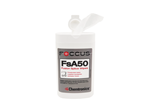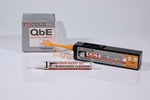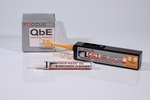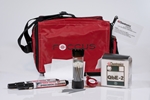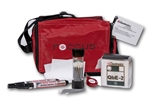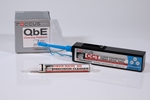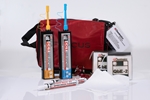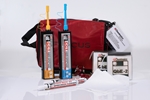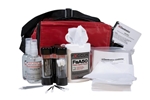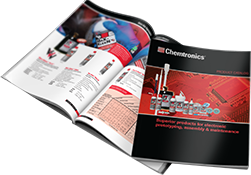Cleaning Study Optimizes Reliability and Bandwidth of Fiber Optic Connections

Optic Connections
As telecommunications companies upgrade and continue to expand their fiber optic networks and plan for Fiber-To-The- Home (FTTH) to accommodate high speed Internet access, the need for an effective, repeatable and cost-effective means of cleaning optical fiber connections becomes essential. Traditional cleaning methods, lack of formal cleaning procedures, and the misuse or overuse of cleaning products can result in signal degradation. A newer cleaning method has been proven to be more efficient and cost effective.
Growing consumer demand for high-speed Internet access is anticipated to expand well beyond existing capacity. Effectively cleaning fiber optic connections is essential to assuring trouble-free transmission of the full spectrum of data, Internet and video services required.
To allow high-speed connections, engineers have created a broad assortment of mechanical ferrule connectors and alignment sleeves. However, these connectors can present a new set of cleaning problems. As many as 80% of all transmission problems are caused by contaminated connectors. Not all technicians and engineers are aware that end faces must be cleaned each time a connection is made. Contaminants from many ambient sources, unless they are completely removed, can accumulate on the end faces and other parts. These contaminants can cross contaminate other connectors, causing measurable signal deterioration.
Challenges with Current Cleaning Processes
Even for those technicians where cleaning end faces is standard procedure, there is still controversy regarding the best method of cleaning. There are dry cleaning techniques using low lint-free fabrics, while others prefer a wet cleaning process, which employs a solvent cleaner. However, both techniques can have drawbacks. Manufacturers of cleaning devices sometimes misstate claims and rarely detail exactly how their products should be used.
For example, the recommended “twist and turn” scrubbing motion in dry cleaning can result in scratches that induce signal loss or signal deterioration. The “figure-8 motion”, used for end face polishing, should never be used for end face cleaning. This motion can create excessive lint and damage the end face.
A wet cleaning process largely avoids those issues of scratching, the solvent can present its own problems. Even the highest grade of 99.9% IPA is unable to remove both ionic and complex non-ionic contaminants such as buffer gels or lubricants. Using excessive amounts of IPA can also contribute to signal loss through a phenomenon known as ‘haloing”, which is thought to be residual alcohol and ambient soils.
The use of pump spray bottles exacerbates the problem. Since 99.9% IPA is very hygroscopic, it absorbs any humidity present in the ambient air. The resultant less-concentrated IPA will be less capable of removing oily contaminants. A pump spray container replaces product with ambient air and the moisture it contains. In addition, many spray bottles use mineral oil or another oil to lubricate the piston of the sprayer, which introduces another contaminant.
At Chemtronics we have developed an entirely new means of cleaning fiber optic connections. For the first time proper techniques have been combined with precision cleaning solvents to define an effective fiber optic cleaning method. This new process overcomes the problems encountered in both the wet cleaning and dry-cleaning techniques. This Combination Cleaning™ procedure utilizes a proprietary solvent that effectively removes all commonly encountered contaminants.
Unique Solvent System
Since IPA is the traditional chemical used for both end face cleaning and for fiber preparation before fusion splicing, it has achieved “universal solvent” status. However, use of IPA potentially presents a number of issues: IPA evaporates slowly, and its hygroscopic nature, low volatility and intrinsically higher surface tension can result in adhesion of microscopic particles to the end face surface. Even after drying is apparently complete, these contaminants remain bonded and affect the performance of the end face or ferrule components. Chemtronics’ Combination Cleaning™ procedure incorporates the use of cost-effective materials to clean end faces ferrules and alignment sleeves, including the full range of 2.5 mm and 1.25 mm and similar small form connectors.
To overcome the problems inherent in using IPA for cleaning fiber optic connectors, application specialists at Chemtronics one option recommend is the Electro-Wash® PX Degreaser.This product has been used in electronic precision cleaning applications since 1992. Filtered and packaged in a 200ml or 400ml aerosol can that prevents contact with outside air prior to application, this cleaning solution effectively removes the most common types of soils. A variant of this cleaning solvent is also packaged in a pre-saturated wiper. In addition to the Electro-Wash PX we add the Fiber-Wash pens. The FW2150 (Electro-Wash MX) along with the Non-Flammable FW2170 and FW2190.
The Combination Cleaning Procedure
Development of an effective cleaning solvent was critical to overcoming the drawbacks of a wet cleaning process, but this solved only half the problem. In order to prevent damage to the optical fiber end face during the cleaning process, Chemtronics researchers developed an entirely new cleaning tool – the QbE® Cleaning System. We have engineered a number of Cleaning Platforms for ease of use.
Traditionally, dry cleaning used a spooling device, containing a cleaning tape, which slides over a non-replaceable base. Opening a sliding door positions a small area of cleaning tape within a narrow slot. The fiber end face is then drawn across the tape surface exposed within the slot. Although a fresh section of tape is presented for use with each opening of the sliding door, the only practical way to make efficient use is to use a “twist and turn” motion as one draws the fiber end face across the cleaning surface. This twisting motion can scratch the end face and does not always remove complex contaminants. Using cleaning solvents with these usually results in over-saturation of the fiber connector.
End face contaminants, which include dust, can be more effectively removed using Combination Cleaning™ procedure. In this, where the end face is moved from “wet-to-dry”, using a smooth, unidirectional cleaning pass over the larger cleaning surface provided by the QbE Cleaning System. This process incorporates a small amount (<1ml) of cleaning solvent, with an “automatic” drying process.
The QbE Cleaning Systems all consists of 200 individual sheets of non-linting material. This ample surface area encourages technicians to use a long cleaning stroke in only one direction, with no twisting “back and forth” motion, which could result in scratching of the end face. Each fabric sheet slides over the platen so there is always a new cleaning surface for use. When empty, the Cleaning Platform and platen is discarded, and a new QbE cleaning unit is opened. There are no costly cleaning tape spools to replace.
To clean an end face using the Combination Cleaning™ procedure, the technician delivers a localised spot of cleaning solvent onto one corner of a QbE cleaning sheet. The optical fiber end face is moved from the wet area of the sheet, across the dry portion of the material. Because the lint-free QbE sheet has such a large surface area, it lends itself to using a long, single direction pass rather than an abrasive twist and turn motion.
As in any cleaning procedure, the end face is then checked with an Inspection device and the cleaning procedure repeated if necessary. As the contaminated sheet is discarded, a new sheet is drawn over the platen, giving a clean surface for further use. Technicians report that the low cost of the QbE allows them to use a clean sheet for each end face to be cleaned. The Combination Cleaning™ procedure is so efficient that many technicians report that the number of post cleaning inspections are reduced, therefore saving time and money.
Chemtronics researchers developed the QbE Cleaning Platforms to be highly effective with either wet or dry-cleaning techniques, though dry cleaning should not be used when contamination could be abrasive. The QbE Cleaning System and the Combination Cleaning™ procedure should be used whenever the contaminant is more complex or when visual inspection of the end face is not practical.
Conclusion
The QbE Cleaning System and Platforms offer more complete removal of microscopic contaminants, with far less likelihood of damage to the optical fiber end face, than conventional cleaning methods.Because the solvents are so effective, complex soils are completely removed. Finally, since the end face is being drawn from wet to dry along the surface of the lint-free cleaning material, all contaminant residues are captured within the weave of the QbE sheet. The Combination Cleaning™ procedure combines the best features of both the wet and dry-cleaning techniques to create a new process.


